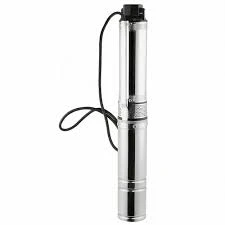Oct . 12, 2024 01:13 Back to list
Understanding the Components of a Submersible Water Well Pump System
Understanding Submersible Water Well Pumps A Comprehensive Overview
Submersible water well pumps are essential devices used to extract groundwater from deep wells. Unlike traditional pumps that rest above ground, submersible pumps are installed underwater, ensuring efficient operation and long-lasting performance. In this article, we will explore the working principle of submersible water well pumps, their design components, and their applications, all illustrated by an intuitive diagram.
Working Principle
The primary function of a submersible pump is to lift water to the surface. The pump operates by converting rotational energy produced by an electric motor into kinetic energy. This energy is transferred to the water, enabling it to flow through the pump and into the delivery pipe, which transports the water to the surface. When submerged in water, the pump is less susceptible to cavitation—a phenomenon that occurs when vapor bubbles form and collapse around the pump impeller, which can cause damage.
Typically, a submersible pump is submerged to an appropriate depth to ensure a constant supply of water, while a check valve is often installed at the discharge end to prevent backflow. When the pump is activated, the motor turns the impeller at high speeds, causing water to be drawn in and pushed out through the discharge pipe.
Design Components
A standard submersible water well pump consists of several critical components
1. Motor The motor is usually located at the bottom of the pump and is designed to withstand submersion in water. It converts electrical energy into mechanical energy, rotating the impellers.
2. Impellers These are rotating components that push water upward. A pump may have one or more impellers arranged in series to increase the flow rate and lift the water to greater heights.
submersible water well pump diagram

3. Diffusers Positioned between the impellers, the diffusers help convert the kinetic energy from the impellers into pressure energy, which aids in lifting the water efficiently.
4. Pump Housing The casing houses the motor, impellers, and diffusers. It's designed to withstand water pressure and protect the internal components.
5. Discharge Head This is the top part of the pump where the water exits. It also provides mounting points for the pump and is often equipped with a check valve.
6. Electrical Cable A submersible pump is connected to the surface power supply via a heavy-duty electrical cable that is waterproof and resistant to corrosion.
Applications
Submersible water well pumps serve a variety of applications
- Residential Use They are commonly used for home water supply systems, providing clean water for drinking, cooking, and bathing. - Agriculture Farmers use submersible pumps for irrigation systems, ensuring that crops receive the necessary water supply. - Municipal Water Supply Many cities utilize submersible pumps for municipal water systems, drawing groundwater for treatment and distribution to residents. - Industrial Applications Industries often rely on submersible pumps for processes that require significant volumes of water, such as in cooling systems or for manufacturing purposes.
Conclusion
Submersible water well pumps are a crucial technology for providing reliable access to groundwater. Their efficient design allows them to operate at significant depths while minimizing maintenance and extending longevity. Understanding the components and workings of these pumps can help homeowners and professionals alike in selecting the right equipment for their needs. By visualizing these elements in a well-structured diagram, one can appreciate not only the complexity of the design but also the simplicity with which these devices fulfill their important role in water extraction. As water scarcity issues continue to rise globally, the importance of such solutions becomes ever more critical, making submersible pumps key players in sustainable water management.
-
Submersible Water Pump: The Efficient 'Power Pioneer' of the Underwater World
NewsJul.01,2025
-
Submersible Pond Pump: The Hidden Guardian of Water Landscape Ecology
NewsJul.01,2025
-
Stainless Well Pump: A Reliable and Durable Pumping Main Force
NewsJul.01,2025
-
Stainless Steel Submersible Pump: An Efficient and Versatile Tool for Underwater Operations
NewsJul.01,2025
-
Deep Well Submersible Pump: An Efficient 'Sucker' of Groundwater Sources
NewsJul.01,2025
-
Deep Water Well Pump: An Efficient 'Sucker' of Groundwater Sources
NewsJul.01,2025
-
 Submersible Water Pump: The Efficient 'Power Pioneer' of the Underwater WorldIn the field of hydraulic equipment, the Submersible Water Pump has become the core equipment for underwater operations and water resource transportation due to its unique design and excellent performance.Detail
Submersible Water Pump: The Efficient 'Power Pioneer' of the Underwater WorldIn the field of hydraulic equipment, the Submersible Water Pump has become the core equipment for underwater operations and water resource transportation due to its unique design and excellent performance.Detail -
 Submersible Pond Pump: The Hidden Guardian of Water Landscape EcologyIn courtyard landscapes, ecological ponds, and even small-scale water conservancy projects, there is a silent yet indispensable equipment - the Submersible Pond Pump.Detail
Submersible Pond Pump: The Hidden Guardian of Water Landscape EcologyIn courtyard landscapes, ecological ponds, and even small-scale water conservancy projects, there is a silent yet indispensable equipment - the Submersible Pond Pump.Detail -
 Stainless Well Pump: A Reliable and Durable Pumping Main ForceIn the field of water resource transportation, Stainless Well Pump has become the core equipment for various pumping scenarios with its excellent performance and reliable quality.Detail
Stainless Well Pump: A Reliable and Durable Pumping Main ForceIn the field of water resource transportation, Stainless Well Pump has become the core equipment for various pumping scenarios with its excellent performance and reliable quality.Detail
